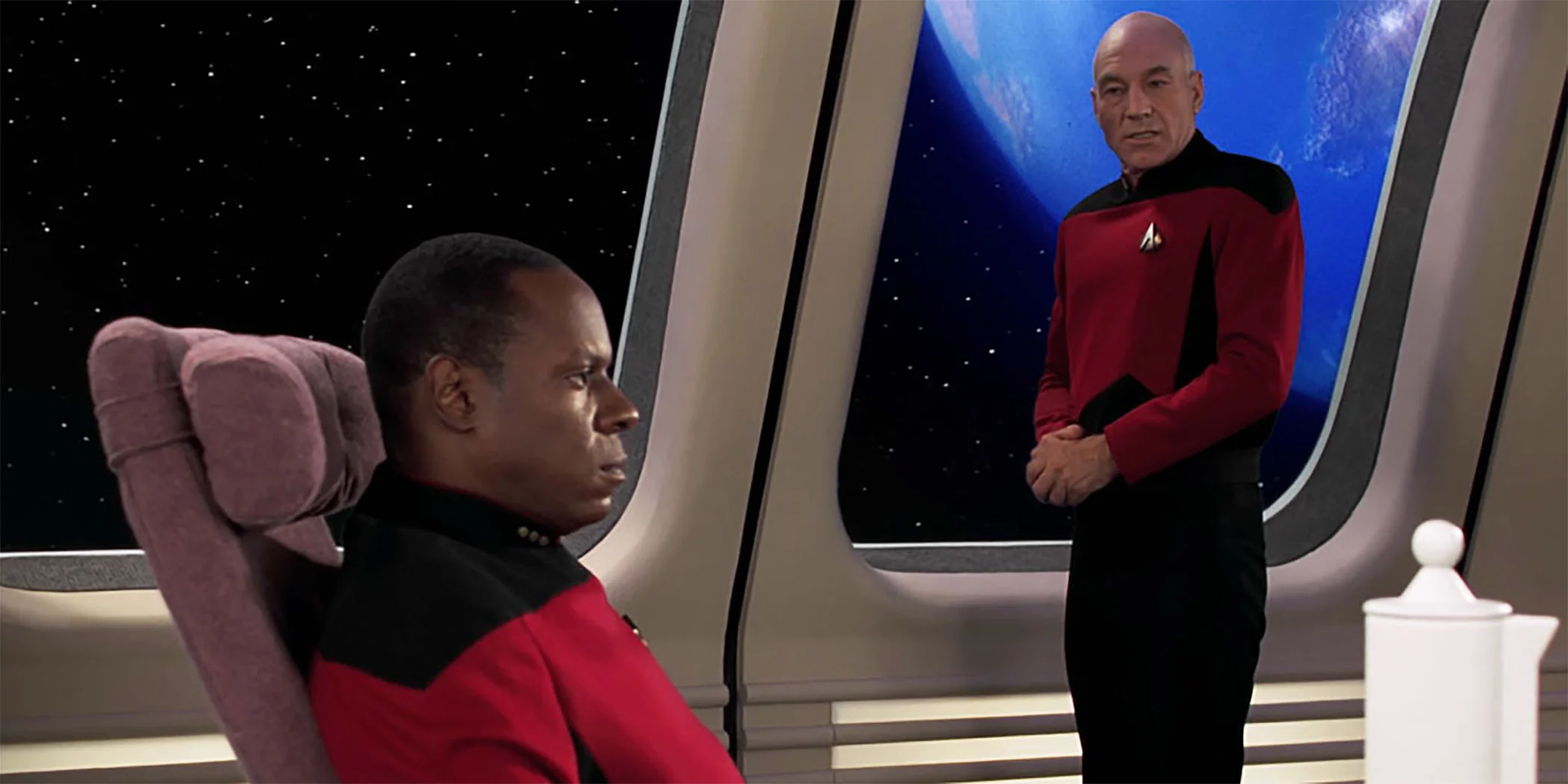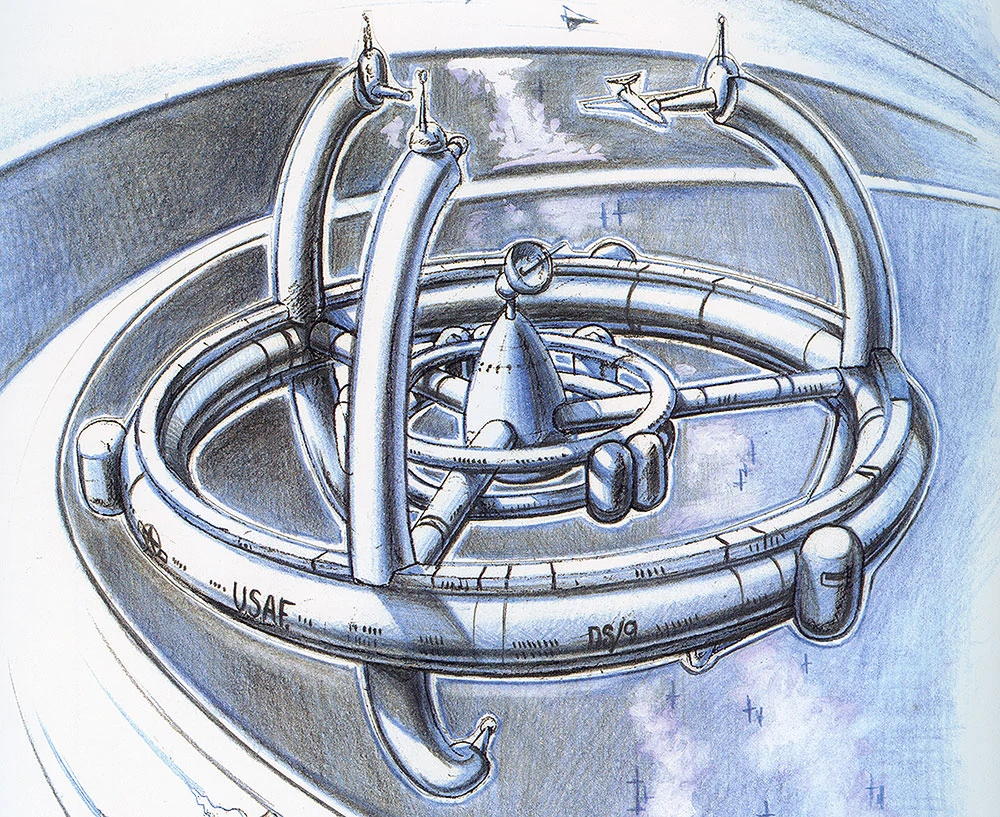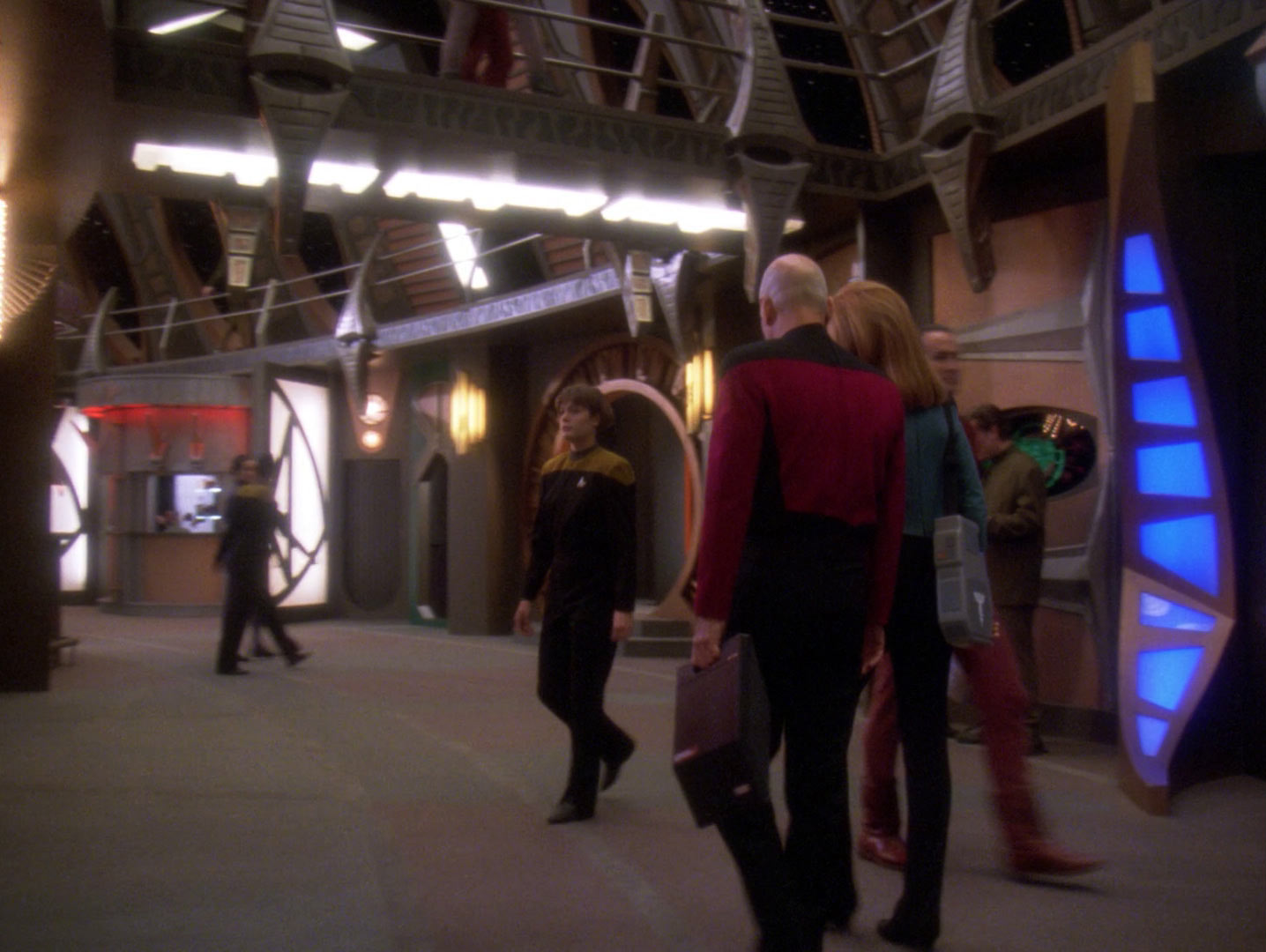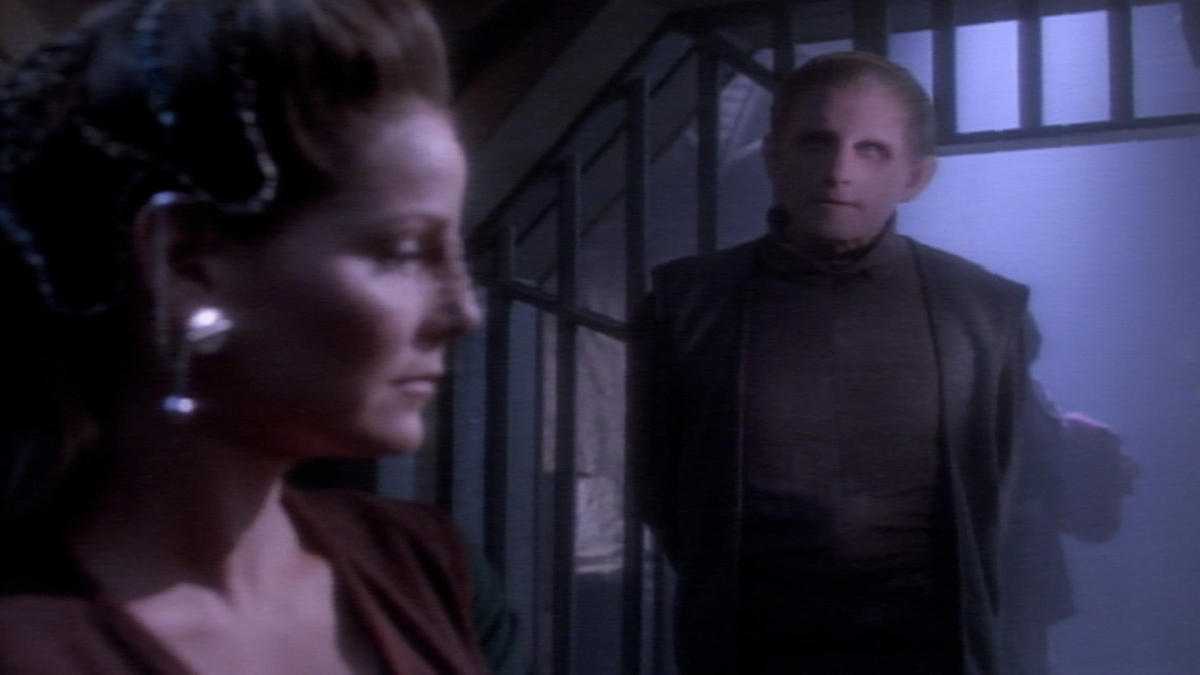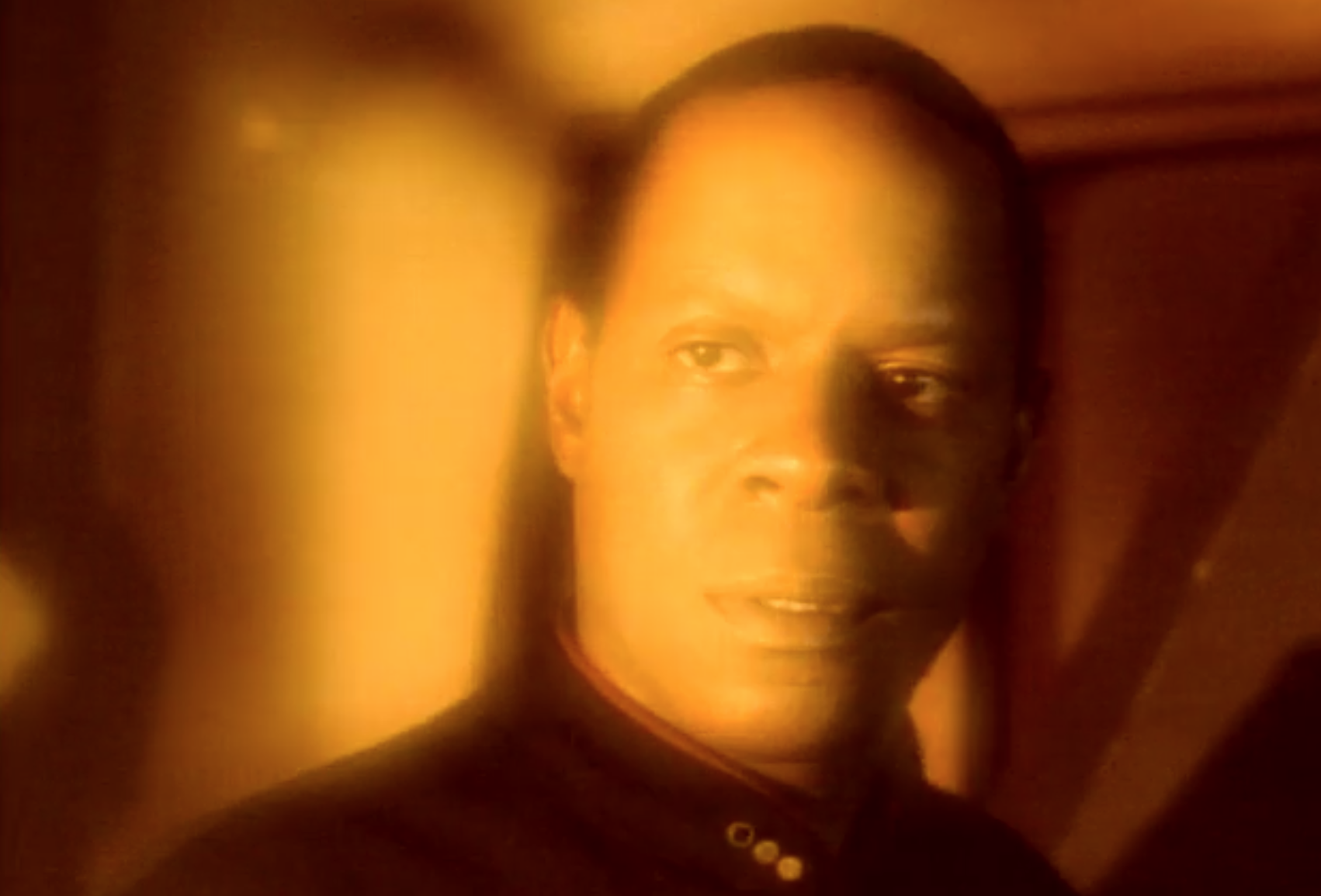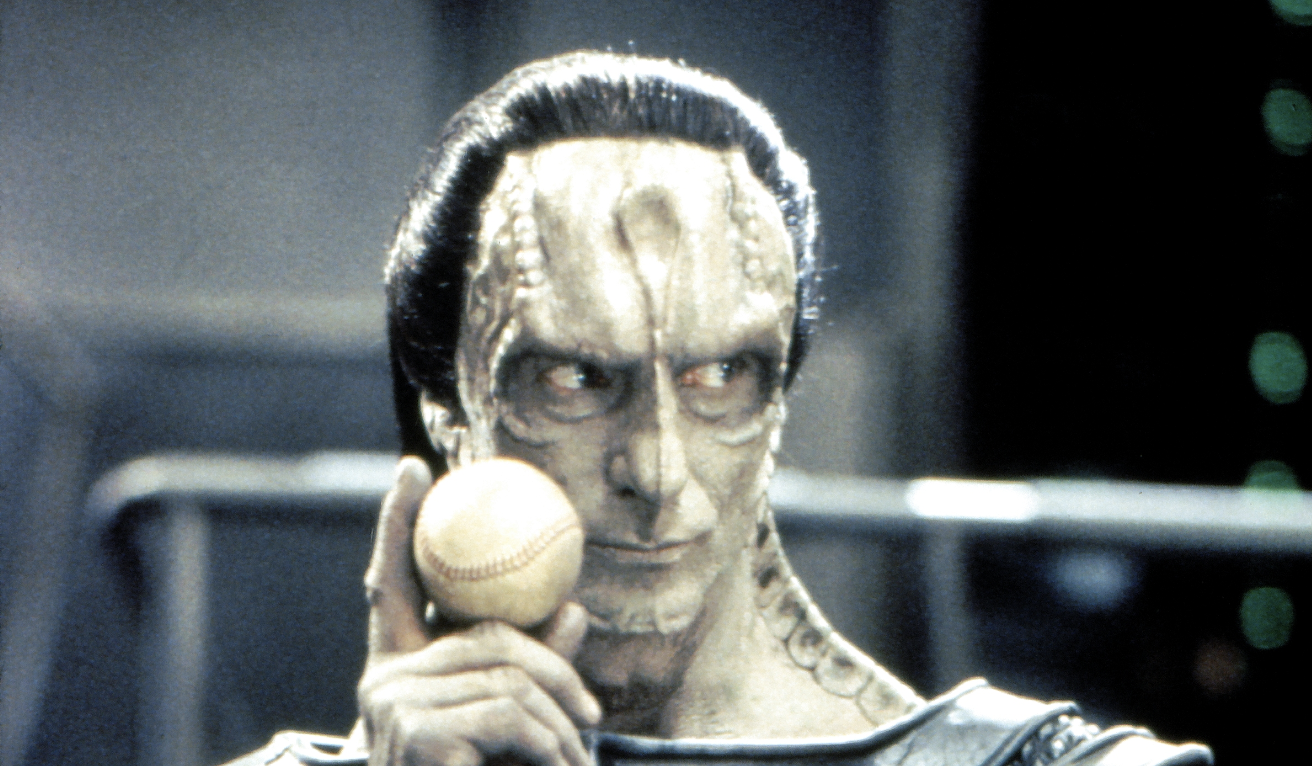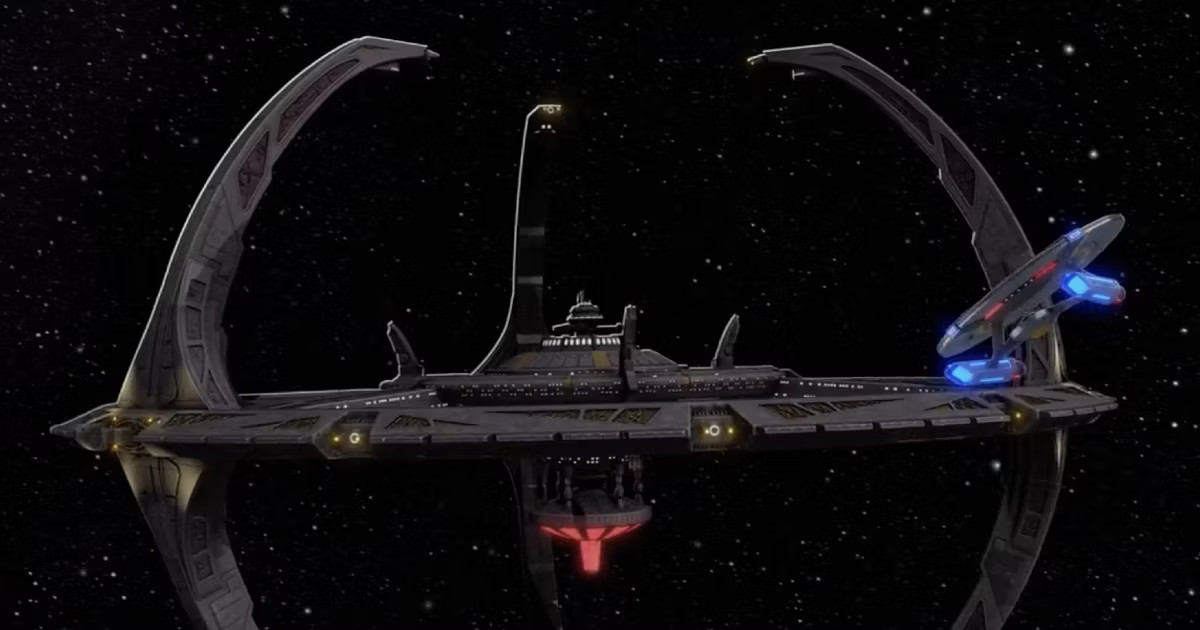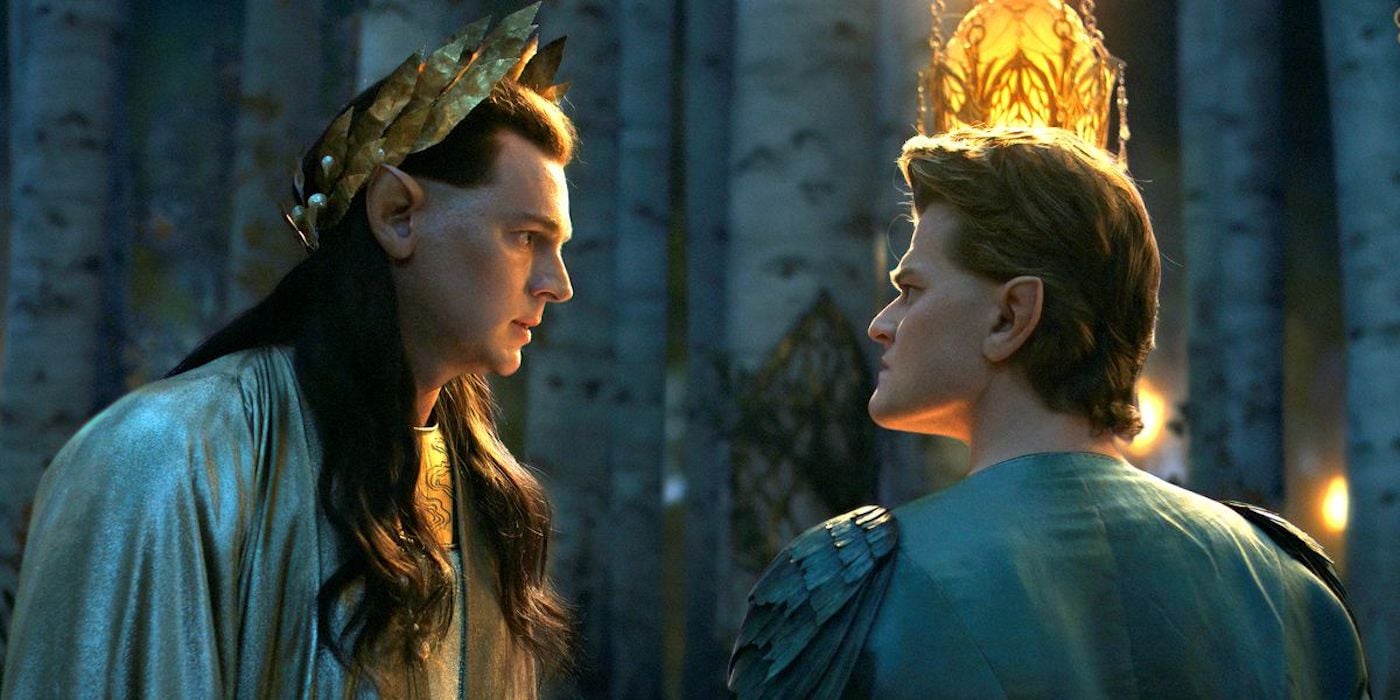Terok Nor No More – The Deep Space Nine Breakdown
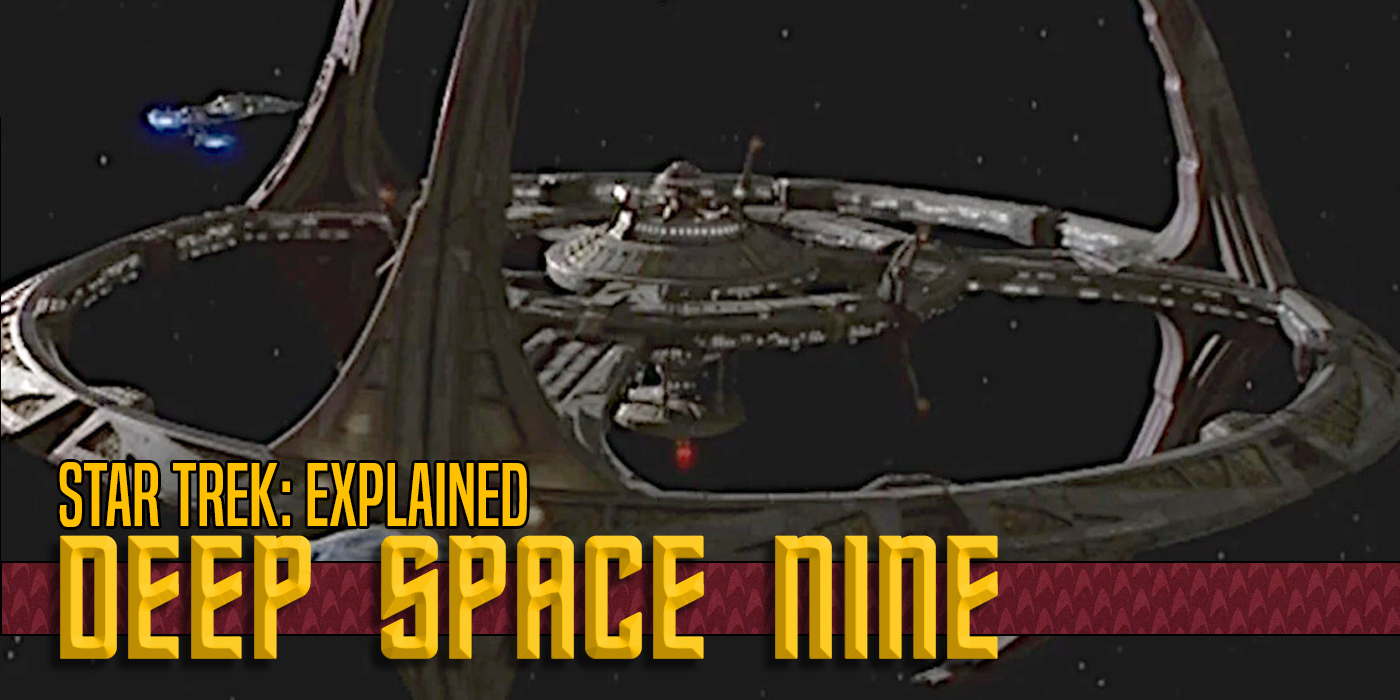
Star Trek: Deep Space Nine is the only show in the franchise set on a space station rather than a ship. And what a space station it is!
Starfleet has a lot of variations on space stations: space docks, spaceports, arrays, control posts, and relay stations. But the most notable one bar none is Deep Space Nine. Part of why Deep Space Nine is such a big deal is that there’s literally a show about it. But it’s also a rare instance where Starfleet occupies a station that is not their own creation.
There’s plenty of hay to make out of the people living on the station. But today we are talking about the station itself. What is its history? What goes into its real-life design? And what’s with those pylons?
Building a New Home for Star Trek
Star Trek: The Original Series and Star Trek: The Next Generation are both rote, on-the-rails Trek. They are both set on ships. They both focus on commissioned officers in Starfleet. And they both boldly go… somewhere. Star Trek: Deep Space Nine involves staying put, at least in its setting. So the goal becomes, how do we still boldly go?
And one major way DS9 accomplishes this is in its station design. “They wanted it not to look Starfleet, they wanted it to look weird,” says long-time Star Trek production designer Mike Okuda. And, the station is, narratively at least, of Cardassian design – an alien race that is not part of the Federation. So, what does a Cardassian space station look like?
The initial concept for Deep Space Nine is the Tower of Babel. And the specific idea is that the station in its current form is built over centuries. Different sections of the station’s design come from different species. Different technology, different layouts – this station concept is almost like the Winchester House.
The Tower of Babel makes contextual sense for the show. After all, the station’s residents speak different languages, have different faiths, and these differences often lead to conflict. There’s even an episode in the first season titled “Babel” where the crew gets a virus that makes them unable to communicate with each other.
But Deep Space Nine is not the Tower of Babel in design at all.
A Broken Gyroscope
The final design of Deep Space Nine is surprisingly close to one of the earliest concept drawings. Herman Zimmerman, the production designer, eventually comes up with a station that looks like two hoops circling a central hub – like a gyroscope. One day executive producer Rick Berman comes in, looks at this particular design, and suggests breaking the hoops at the top and bottom. Add one extra pylon and you effectively wind up with the final exterior design.
The station in real life is six feet in diameter. Rick Sternbach joins Zimmerman in creating the physical model. And the final build is all Tony Meininger’s work.
DS9 is the first Star Trek series to use CGI in earnest. Odo’s shapeshifting abilities, for example, have to be CGI – there’s just no other way to achieve that effect. And as time goes on in the series, the space battles get big enough that even the ships (which are usually models) have to be replaced with CGI. Fun fact: the station is the very last prop that eventually becomes CGI.
The Deep Space Nine exterior is only CGI for one shot in the entire run of the series and it’s the final shot of the show. The parting moment in the series finale “What You Leave Behind” pulls out of a window, away from Kira Nerys and Jake Sisko. It’s all one fluid shot that takes us from the interior of the station to the exterior, and all the way out into space, pulling back and back until the station is just one more shining star in an endless sky.
Now, the station interior? That’s another story entirely!
Cardassian Interior Decorating
Going back to the original concept, Deep Space Nine has to be alien and otherworldly. We now know how that looks on the outside, but how does that shape up on the inside? In order to achieve consistency, Herman Zimmerman crafts a set of guidelines for Cardassian architecture. The biggest notes call for geometric symmetry, they prefer the circular design to square, and groupings of three (like the pylons in the exterior of the station).
The other obvious design decision relates to color. A major transition in Cardassian design from Star Trek: The Next Generation to Deep Space Nine, in general, is one of color. In their first appearance in “The Wounded,” the Cardassians wear brown suits and have more tan coloring. On Deep Space Nine, their color schemes change to ones of greys and blacks.
That alien design choice plays out in Cardassian design as well. Much of DS9 is made up of darker colors, khakis, greens, and, yes, grays, and blacks. You can see this, especially in episodes set during the time when Gul Dukat was the prefect of Bajor and ruled over the planet from the then-named Terok Nor space station.
On that note, let’s talk about the fictional history of the station.
Terok Nor and the Occupation of Bajor
Bajor was a paradise. A culture of artisans, farmers, and generally peaceful people, Bajor, and its people had all the resources they needed and spent a long time being the ideal. Then the Cardassians came. Cardassia Prime is more technologically advanced than Bajor. Its leadership believes in involuntary annexation of other worlds for the secured benefit of Cardassia.
And while they lived in peace for a long time, one day Cardassia attacked and occupies Bajor. From 2319–2369 Cardassia ruled over Bajor with an iron fist. Beginning in 2346, the Cardassians build a space station for the refinement of uridium ore by Bajoran slave labor. The station, Terok Nor, has a prefect in the form of Gul Dukat who oversees the entire occupation.
Freedom fighters spend much of the 50 years of Cardassian occupation fighting back which eventually bleeds into attacks on Terok Nor as well. Eventually, it no longer behooves the Cardassians to remain and so they leave the station behind, but not before Dukat and his underlings kill a few more station residents and generally wreck the place.
The Federation, the Prophets, and the Emissary
The Cardassians leaving Bajor and Terok Nor leaves a massive power vacuum in that part of the quadrant. Bajor itself rebuilds and has a provisional government, but disagreements over how to reconstruct create even more problems. Enter The Federation. With tenuous relationships between both Bajor and Cardassia, Starfleet takes over Terok Nor, renaming it Deep Space Nine. The goal is to bring Bajor into the United Federation of Planets.
Then a funny thing happens. While Cardassia tries to retake the station, the one and only stable wormhole in existence opens up. Deep Space Nine moves to the mouth of the wormhole, which leads to the mysterious Gamma Quadrant. And all of the sudden, Deep Space Nine and Bajor are the most important location in that region of space.
The Bajorans view the wormhole as a gateway to the celestial temple, home of their gods, the prophets. They view Deep Space Nine as a temple, too. And they see its commander Benjamin Sisko as the emissary to the prophets and one of their spiritual leaders. Long story short, Deep Space Nine is suddenly one of the most important socio-economic and religious locations in the galaxy. What could go wrong?
The Gamma Quadrant, the Founders, and the Dominion War
Obviously, A LOT happens over the course of Star Trek: Deep Space Nine. We get a new starship in the USS Defiant. Worf joins the crew. The Klingons wage war against the Federation. People die! But as for the station itself, everything boils down to two things: the wormhole and what comes out of it. And what comes out of that wormhole is war – specifically with the Dominion.
So, the Dominion is made up primarily of three groups: a soldier caste called the Jem’Hadar, their proverbial generals the Vorta, and their rulers and gods the Founders. And the Dominion is basically what if the Federation but you don’t get a choice if you want to join or not. The one group which does want to join (at first) is Cardassia. And with the Dominion, Gul Dukat and the Cardassians do temporarily take control of Deep Space Nine for a time.
The wormhole also closes for a while – because the prophets get mad at Sisko. And one of the biggest consequences of the prophets abandoning the Bajorans is the sudden prominence of a new religion called The Cult of the Pah-wraiths. If the prophets are like angels, the Pah-wraiths are basically demons. And as you might imagine, the station is frequently rattled by the religious tumult. Also, gods and demons nearly blow the place up a couple of times.
Deep Space Now
Despite terrorist attacks, hostile takeovers, gods, monsters, emissaries, and a lot of baseball, Deep Space Nine is still standing. And since Star Trek: Lower Decks is set after the events of DS9‘s seventh and final season, we are about to find out what kind of shape the station is in. Sufficed to say, it’s not so different from the one most fans remember – aside from it being animated.

